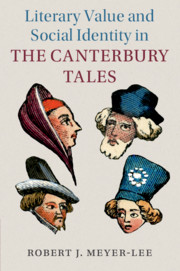Book contents
- Literary Value and Social Identity in the Canterbury Tales
- Cambridge Studies in Medieval Literature
- Literary Value and Social Identity in the Canterbury Tales
- Copyright page
- Dedication
- Contents
- Acknowledgments
- Abbreviations
- Introduction
- Chapter 1 Clerk
- Chapter 2 Merchant
- Chapter 3 Squire
- Chapter 4 Franklin
- Notes
- Works Cited
- Index
- Cambridge Studies in Medieval Literature
- References
Works Cited
Published online by Cambridge University Press: 15 October 2019
- Literary Value and Social Identity in the Canterbury Tales
- Cambridge Studies in Medieval Literature
- Literary Value and Social Identity in the Canterbury Tales
- Copyright page
- Dedication
- Contents
- Acknowledgments
- Abbreviations
- Introduction
- Chapter 1 Clerk
- Chapter 2 Merchant
- Chapter 3 Squire
- Chapter 4 Franklin
- Notes
- Works Cited
- Index
- Cambridge Studies in Medieval Literature
- References
- Type
- Chapter
- Information
- Literary Value and Social Identity in the Canterbury Tales , pp. 265 - 279Publisher: Cambridge University PressPrint publication year: 2019

